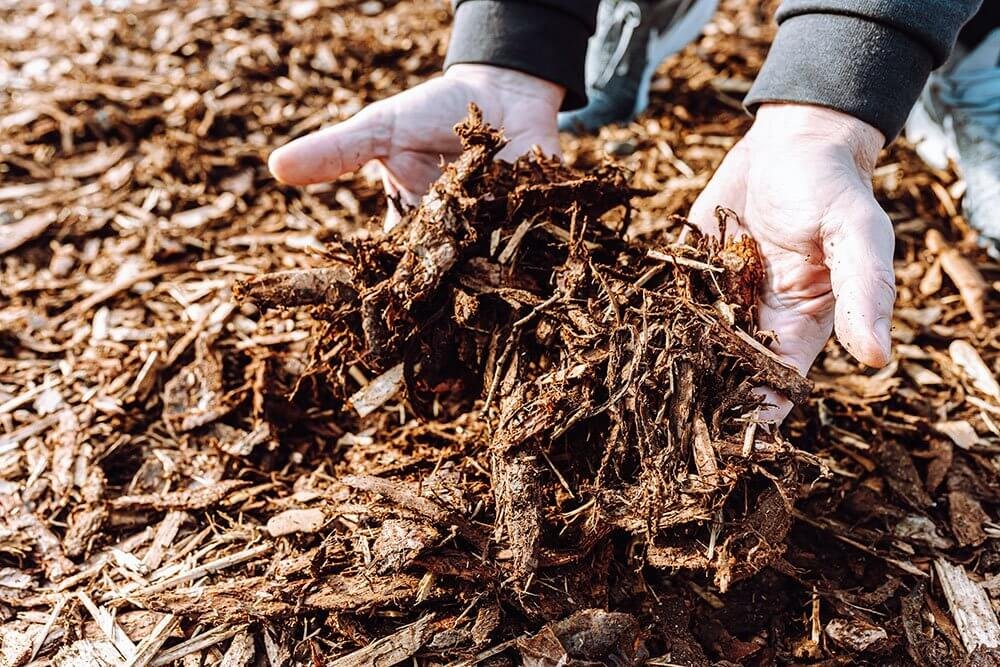Maintaining trees’ health, beauty, and safety on your property is crucial, especially during droughts. California residents are keen on conserving water as the warm season arrives and rain becomes scarce. But how can you keep trees healthy and hydrated while also saving water?
The answer is Mulch. Applying Mulch is a simple way to support the health of mature trees and saplings while conserving water. It also controls weeds, enriches the soil, and provides other benefits. Discover the wonders of Mulch by following the steps below.
The Top 5 Benefits of Mulching Trees
Understanding how Mulch benefits trees can help you focus your efforts and maximize the advantages. Here are five ways Mulch helps trees:
1. Moisture Retention
Mulch creates an insulating blanket over the soil, reducing evaporation and preserving moisture for tree roots. This is especially important during droughts. Mulch also suppresses weed and grass growth, preventing competition for water. When it rains, Mulch aids in preventing water loss through run-off and erosion.
2. Soil Temperature Moderation
Proper mulching can moderate soil temperature fluctuations. Mulch keeps the soil cool during hot weather by shielding it from sunlight and heat. Mulch helps soil retain warmth in cold weather, reducing the risk of frost damage or root injury.
3. Soil Health Improvement
Decomposing organic Mulch provides structure, nutrients, and aeration for the soil. More information on organic vs. inorganic Mulch is discussed below.
4. Root and Trunk Protection
Properly distributed Mulch protects tree roots, keeps the trunk dry, and prevents soil compaction caused by foot traffic and lawnmowers.
5. Weed and Grass Growth Discouragement
As mentioned earlier, mulching deters weed and grass growth. These invasive plants steal not only moisture but also essential nutrients from trees.
The Art of Mulching Trees
Organic vs. Inorganic Mulch
Choosing the right Mulch for your landscape involves considering two options: organic and inorganic. Each type has unique benefits and drawbacks.
Organic Mulch:
Organic Mulch is ideal if you want to improve topsoil health and are okay with routine care.
Examples of organic Mulch include:
- Wood chips
- Straw
- Pine needles
- Shredded hardwood or softwood
- Bark
- Leaves
Organic mulches enhance soil structure and fertility as they decompose. However, they require more upkeep and reapplication due to decomposition.
Inorganic Mulch:
is a low-maintenance, eye-catching option.
Examples of inorganic Mulch include:
- Stones or pebbles
- Gravel
- Tarp
- Rubber
Inorganic mulches offer long-lasting weed prevention and require less upkeep. They also provide versatile aesthetic options, with river rocks and multicolored stones making attractive landscape additions.
Mulching to the Drip Line
When mulching, consider the area you are covering and how close to the trunk to place the Mulch. Keep Mulch away from the trunk and begin at the root flare. The mulch area should increase as the tree grows, ideally extending to the tree’s canopy or drip line.
Avoid Over-Mulching
Over-mulching is a common mistake. Avoid piling Mulch over the root flare and up the trunk. The mulch depth should be between two and four inches or less for poorly drained soil. Finer or dense Mulch, like pebbles, should be one to two inches deep to ensure sufficient oxygen and water reach the root system.
Now that you understand the benefits of mulching and the proper methods, materials, and frequency, it’s time to put this knowledge into practice. Mulch promotes tree health and helps create an attractive, low-maintenance yard. Following these guidelines, you can keep your trees healthy, save water, and contribute to a thriving landscape. Happy mulching!

